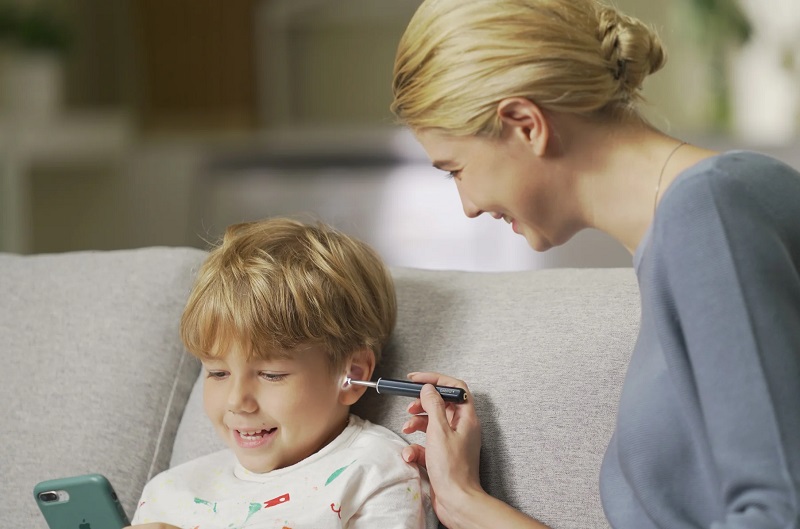Good ear hygiene consists of safely cleaning the ear, whether with hygiene products or unsuitable accessories. Here are the main steps for washing your ears properly and safely:
- Washing the ears when showering with soap and water allows sufficient cleaning of the skin around the pinna. This simple, non-invasive gesture removes sebum and earwax outside the ear.
- It is then necessary to proceed to a thorough drying with cotton or with a handkerchief to remove the excess water.
- Regarding the ear canal, dry it well with a tissue or a piece of cotton at the entrance only. This small gesture helps prevent the risk of ear infections.
When to wash your ears
Removing the visible earwax once or twice a week at the entrance to the ear canal is more than sufficient. Using an ear cleaner is important for this purpose.
Ban the cotton swab
The cotton swab is probably the most used hygiene tool for cleaning your ears. Yet, it is often very poorly used! It is suitable for cleaning the surrounding of the pinna of the ear, but it must not be pushed too far into the ear canal under any circumstances. There are risks associated with using the cotton swab:
Most people abuse the cotton swab to remove earwax from the ear canal. However, by using the cotton swab directly in the duct, earwax and dead skin are pushed all the way back to the eardrum.
Occasionally, this forms a plug of earwax and dirt resulting in reduced hearing ability (conductive hearing loss). In some cases, people experience hearing loss: just go to a doctor to remove the earwax plug painlessly. Sometimes hearing aid patients think their hearing aid is not working when they simply have a buildup of earwax in the ear canal!
Good to know: Ecological washable and reusable cotton swabs have entered the ear hygiene market. Be careful, they are also responsible for the formation of earwax plugs when they are misused.
The right accessories for ear hygiene
A damp tissue is sufficient to clean the pinna without risk of injury. There is also a small reusable plastic or metal style that allows you to remove excess earwax without the risk of forming a plug at the bottom of the duct.
The ecological ear-pick, most often made of bamboo, is starting to find a place in bathrooms. Coming from Asia, this small wooden and fabric accessory can be used once or twice a week to remove excess earwax at the entrance to the ear canal.
Spray for the ears: how effective?
In order to clean the ears without the risk of injury, ear cleaning sprays have been developed. Their main mode of action is to break down the fatty particles in earwax. Not surprisingly, they are not essential. These too should be used with caution, once a week so as not to create irritation. To remove dirt, be sure to proceed gently with a piece of cotton or a small handkerchief. If you like this type of product, opt for a bottle without propellant gas to avoid damaging your eardrum.
Did you know? The more the ear canal naturally protected by earwax is scrubbed, the more earwax production increases.



